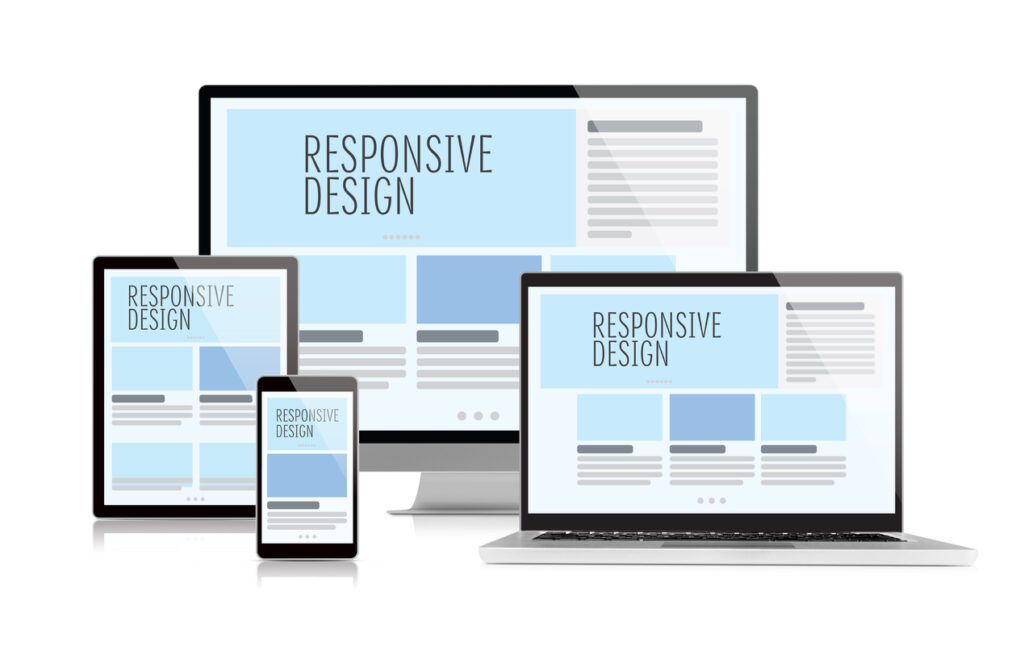
A responsive website is designed to provide an optimal viewing experience across a wide range of devices, from desktops to smartphones. Here are the key features that contribute to a responsive web design:
1. Fluid Grid Layout
- Flexible Grids: A responsive website uses a fluid grid system that scales and adapts to different screen sizes. Instead of fixed pixel widths, elements are sized in relative units like percentages, allowing them to adjust to the screen width.
2. Media Queries
- CSS Media Queries: Media queries enable the application of different CSS styles based on the device’s characteristics (e.g., screen width, height, resolution). This allows the website to change its layout and design based on the user’s device.
3. Flexible Images and Media
- Responsive Images: Images and videos are resized to fit within their containers, ensuring they scale correctly without losing quality or causing layout issues. Techniques like
max-width: 100%;are commonly used. - Adaptive Media: Media elements can be set to change based on the screen size, such as different image resolutions for mobile and desktop users.
4. Mobile-Friendly Navigation
- Simplified Menus: Navigation should be easy to use on smaller screens. Techniques like collapsible menus (hamburger menus) or dropdowns are often implemented to save space and enhance usability.
- Touch-Friendly Elements: Buttons and links should be large enough to be easily tapped on touch screens, reducing the likelihood of user errors.
5. Responsive Typography
- Flexible Font Sizes: Font sizes should be adaptable based on the screen size. CSS units like
emorremallow for scalability, making text legible on all devices. - Line Spacing and Text Layout: Adjustments in line height and spacing ensure readability across various screen sizes.
6. Consistent User Experience
- Uniform Design Elements: A responsive site maintains consistent design elements (such as color schemes, button styles, and branding) across devices, providing a seamless user experience regardless of how the site is accessed.
- Content Prioritization: Important content is prioritized and displayed prominently on smaller screens, while additional content may be hidden or moved to improve usability.
7. Testing Across Devices
- Cross-Device Compatibility: A responsive website is tested across various devices and screen sizes to ensure it functions properly and maintains usability.
- Browser Compatibility: It should also work seamlessly across different web browsers, ensuring that all users have a consistent experience.
8. Performance Optimization
- Minimized Load Times: Responsive websites should be optimized for speed, ensuring that images and resources are appropriately sized for different devices to reduce loading times.
- Lazy Loading: This technique loads images and media only when they enter the viewport, improving performance, especially on mobile devices.
9. Accessibility Considerations
- Accessible Design: A responsive website should follow accessibility best practices to ensure it is usable by individuals with disabilities. This includes using appropriate semantic HTML and ARIA roles.
10. SEO-Friendly
- Single URL Structure: A responsive design typically uses a single URL for all devices, which is beneficial for SEO, as it consolidates page authority and improves search rankings.
- Mobile-First Indexing: Search engines prioritize mobile-friendly websites. A responsive design ensures your site is indexed correctly for mobile searches.
Conclusion
A responsive website adapts to various devices and screen sizes, enhancing user experience and accessibility. By implementing features like fluid grid layouts, media queries, flexible images, and mobile-friendly navigation, you can create a site that performs well across all devices and provides a consistent experience for users.







